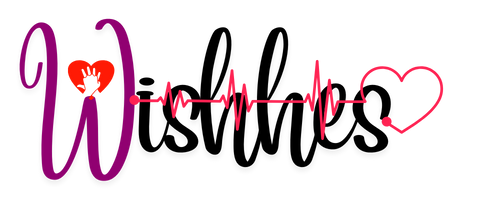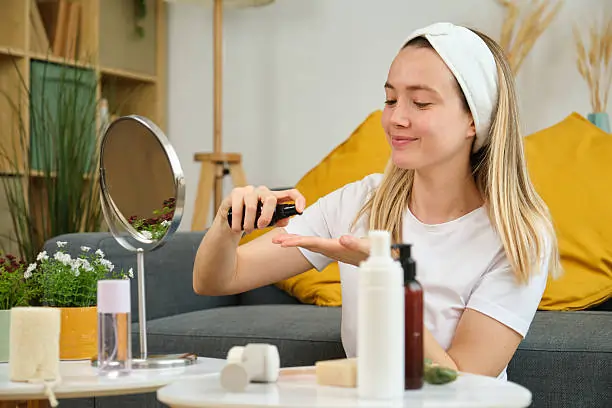1. Introduction
Hemorrhoids, commonly called piles, affect millions of people worldwide—but many feel too embarrassed to discuss them. That silence often delays diagnosis and treatment, making symptoms worse over time. If you’ve ever experienced itching, pain, or seen blood after a bowel movement, you could have hemorrhoids and not realize it.
Changes in lifestyle—like sitting for long hours or eating a low-fiber diet—have led to an increase in hemorrhoid cases. Some try home remedies or ignore symptoms, hoping they’ll resolve on their own. But without proper care, hemorrhoids can severely impact comfort and quality of life, and may even lead to complications.
Although “hemorrhoids” and “piles” are different terms, they refer to the same condition. Recognizing the symptoms and understanding the available treatment paths is crucial to finding relief. There are internal and external hemorrhoids, each requiring its own approach.
In this article, we’ll cover everything from causes and symptoms to effective treatment options and prevention tips. You’ll also discover how natural supplements like Fitolium can support your body in reducing inflammation and discomfort associated with hemorrhoids. Our goal is to provide clear, practical advice so you can regain your comfort and well-being.
Let’s begin by exploring what causes hemorrhoids and how they develop.
2. What Are Hemorrhoids (Piles)?
Hemorrhoids are swollen veins in the lower part of the rectum or around the anus. They’re similar to varicose veins you might see in the legs, but they appear where stool exits the body. In many cases, hemorrhoids are harmless—but they can become painful, itchy, or even bleed.
There are two main types of hemorrhoids:
- Internal hemorrhoids: These form inside the rectum and are usually not visible. They rarely cause pain, but they can bleed during bowel movements.
- External hemorrhoids: These develop under the skin around the anus. They may cause itching, swelling, or pain—especially when sitting or passing stool.
Why do hemorrhoids happen? There are many reasons. A common cause is straining during bowel movements, often due to constipation. Pregnancy is another factor—extra pressure from the growing baby can affect blood flow in the pelvic area. Other triggers include sitting for long periods, low-fiber diets, obesity, and even genetics.
Hemorrhoids are surprisingly common. Studies suggest that nearly half of all adults over 50 will experience hemorrhoids at some point. But they’re not just a concern for older adults—young people with poor eating habits or sedentary lifestyles can also be affected.
So, what’s really going on in the body? Hemorrhoids happen when pressure builds up in the veins of the rectum. This pressure causes the veins to stretch and swell. Over time, this leads to inflammation and the symptoms most people associate with hemorrhoids—itching, burning, discomfort, and in some cases, bleeding.
In most cases, hemorrhoids are not dangerous. But if left untreated, they can become larger, more painful, or develop complications such as blood clots or infections. That’s why it’s so important to recognize the early signs and take steps to treat or manage the condition before it worsens.
Next, let’s look at the difference between internal and external hemorrhoids—and why it matters.
3. Internal vs. External Hemorrhoids: Key Differences
Not all hemorrhoids are the same. In fact, understanding the difference between internal and external hemorrhoids can help you recognize symptoms faster and choose the right treatment. These two types differ in location, symptoms, and severity.
Location
Internal hemorrhoids form inside the rectum. Because there are few pain-sensing nerves there, they usually don’t hurt. External hemorrhoids, on the other hand, form under the skin around the anus, where there are more nerve endings—so they tend to cause more discomfort.
Symptoms
| Internal Hemorrhoids | External Hemorrhoids |
| Bleeding during bowel movements | Pain or discomfort while sitting |
| Mild pressure in the rectum | Swelling around the anus |
| Painless prolapse (in severe cases) | Itching, burning, or soreness |
| Usually not visible | Visible lumps or bumps |
Pain and Discomfort
While internal hemorrhoids may bleed, they often go unnoticed because they don’t usually cause pain. However, if they prolapse—meaning they slip out of the anal opening—they can cause significant discomfort. External hemorrhoids, by contrast, can be painful even when small. Sitting, walking, or using the toilet can make the pain worse.
Complications
Both types can lead to issues if left untreated. Internal hemorrhoids may prolapse or become strangulated (cut off from blood supply). External hemorrhoids may develop clots, a condition called thrombosed hemorrhoids, which causes intense pain and swelling. These clots sometimes require medical removal.
In short, the key difference is location and sensitivity. Internal hemorrhoids may bleed but are often painless. External ones are more likely to hurt, itch, and cause noticeable swelling. Knowing which type you’re dealing with is the first step toward proper treatment.
Now that we’ve explored the types, let’s move on to the common symptoms that tell you it’s time to pay attention.
4. Common Symptoms and When to Seek Help
Many people ignore the early signs of hemorrhoids, thinking the discomfort will pass on its own. But spotting the symptoms early helps you take control before things get worse. Below are the most common signs that you may be dealing with hemorrhoids.
- Bleeding during bowel movements – This is one of the most frequent symptoms. You may notice bright red blood on toilet paper or in the toilet bowl.
- Itching or irritation – A persistent itch around the anus is a sign of external hemorrhoids or irritation from internal ones.
- Lumps or swelling – You might feel or see soft bumps around the anus, which can be swollen external hemorrhoids.
- Pain or discomfort – Pain may occur during or after bowel movements, especially if there’s a thrombosed external hemorrhoid.
- Leaking or soiling – Sometimes, hemorrhoids can interfere with complete closure of the anus, causing leakage.
It’s important to remember that not all rectal bleeding comes from hemorrhoids. Conditions like anal fissures, polyps, or even colorectal cancer can have similar symptoms. That’s why bleeding should never be ignored, especially if you’re over 45 or have a family history of colon issues.
When should you see a doctor?
- Symptoms last more than a week despite home care
- You experience severe pain or swelling
- You notice dark or tarry stools
- Bleeding is heavy or frequent
Even if your symptoms seem mild, getting medical advice early can save you from discomfort down the road. Early-stage hemorrhoids are much easier to manage than chronic or complicated cases. You can also get advice on whether over-the-counter options, lifestyle changes, or supplements might help.
Let’s now explore what causes hemorrhoids and what risk factors increase your chances of getting them.
5. Causes and Risk Factors
Hemorrhoids don’t just appear out of nowhere. They usually develop over time due to increased pressure in the lower rectum. Understanding the causes and risk factors can help you make lifestyle changes that reduce your chances of getting them—or prevent flare-ups if you already have them.
Common Causes
- Constipation and straining – Pushing hard during bowel movements puts pressure on the veins around the anus, which may cause them to swell.
- Chronic diarrhea – Frequent loose stools can also irritate the rectal area and lead to inflammation.
- Pregnancy – The growing uterus puts pressure on pelvic veins, which slows down blood flow and can cause hemorrhoids.
- Prolonged sitting – Sitting for long periods, especially on the toilet, increases pressure on the rectal veins.
Risk Factors
- Low-fiber diet – Not getting enough fiber can lead to constipation and hard stools, which increase the risk of hemorrhoids.
- Obesity – Excess weight increases pressure in the pelvic region.
- Aging – As we get older, the tissues that support veins weaken, making hemorrhoids more likely.
- Genetics – If your parents had hemorrhoids, you might be more likely to develop them too.
- Heavy lifting – Regularly lifting heavy objects, especially without proper form, can increase abdominal pressure and strain.
While not all risk factors can be avoided—like age or family history—many causes are preventable. Improving your diet, staying active, and avoiding straining can go a long way in protecting your rectal health.
But what happens if symptoms appear anyway? Let’s take a look at how doctors diagnose hemorrhoids and rule out other issues.
6. Diagnosis: How Hemorrhoids Are Identified
When you visit a doctor with symptoms like bleeding, itching, or pain around the anus, the first step is a proper diagnosis. Many people assume it’s just hemorrhoids, but similar symptoms can come from other conditions like anal fissures, abscesses, or even colon cancer. That’s why it’s important to get checked out.
Step 1: Medical History and Symptom Check
The doctor will ask about your symptoms, lifestyle, bowel habits, and diet. They’ll also check if you’ve had similar issues before or if there’s a family history of digestive problems.
Step 2: Visual Inspection
For external hemorrhoids, the diagnosis is often made by simply looking at the area. The doctor may gently examine any swelling or visible lumps.
Step 3: Digital Rectal Exam (DRE)
To check for internal hemorrhoids, your doctor might perform a digital rectal exam. They’ll use a lubricated, gloved finger to feel inside the rectum for abnormalities, swelling, or tenderness.
Step 4: Anoscopy or Proctoscopy
If internal hemorrhoids are suspected, the doctor may use a small, lighted tube called an anoscope or proctoscope. This lets them see inside the lower rectum clearly and check for swelling, bleeding, or prolapsed tissue.
Step 5: Colonoscopy (if needed)
If you’re over 45 or have signs that could suggest something more serious—like dark stools, weight loss, or a family history of colon cancer—your doctor may recommend a full colonoscopy. This test helps rule out polyps, tumors, or inflammation in the colon.
The diagnosis process is usually quick and painless. Many cases of hemorrhoids can be confirmed during a simple office visit. Once the type and severity are known, you and your doctor can decide on the best treatment approach.
Let’s now review all available treatment options, from home remedies to surgery.
7. Treatment Options: From Lifestyle to Surgery
The good news is that most hemorrhoids can be treated effectively—often without the need for surgery. Treatment depends on the type, severity, and how long symptoms have been present. Below are the main categories of care, starting with the simplest changes you can make at home.
Lifestyle Changes
In many mild cases, hemorrhoids improve just by adjusting daily habits. These changes reduce pressure in the rectal area and prevent new flare-ups:
- Eat more fiber: Add fruits, vegetables, whole grains, and legumes to your diet to soften stools and prevent straining.
- Stay hydrated: Drink at least 6–8 glasses of water a day to keep digestion moving smoothly.
- Move more: Daily walking or light exercise improves blood circulation and reduces pressure on rectal veins.
- Avoid sitting too long: Take short breaks if you have a desk job, and avoid spending too much time on the toilet.
Over-the-Counter Relief
There are many products available at pharmacies that provide temporary relief:
- Hemorrhoid creams or ointments with hydrocortisone to reduce inflammation
- Suppositories for internal relief
- Witch hazel pads or wipes to calm itching and irritation
- Warm sitz baths (10–15 minutes) to soothe the area
These options can help manage symptoms but don’t always fix the root cause. If your condition persists, more active treatment may be needed.
Prescription Medications
Doctors may prescribe stronger topical treatments, pain relievers, or stool softeners. These are especially helpful for more advanced hemorrhoids or if OTC products haven’t worked.
Minimally Invasive Procedures
When symptoms don’t respond to medication or lifestyle changes, doctors may suggest outpatient procedures such as:
- Rubber band ligation: A small band is placed around the hemorrhoid to cut off blood supply, causing it to shrink and fall off.
- Infrared coagulation: Heat is applied to shrink internal hemorrhoids.
- Sclerotherapy: A chemical injection shrinks the hemorrhoid tissue.
These methods are quick and typically require no stitches or downtime.
Surgical Options
For large or very painful hemorrhoids, surgery might be the best solution. Procedures include:
- Hemorrhoidectomy: Surgical removal of the hemorrhoids. Effective but may involve a longer recovery time.
- Stapled hemorrhoidopexy: Used for prolapsed internal hemorrhoids, this method lifts and secures the tissue back in place using a stapling device.
Surgery is usually a last resort when other treatments haven’t worked or complications arise. Most people never need it—but it’s good to know the option exists.
Alongside these treatments, many people find extra support from natural supplements. In the next section, we’ll look at a modern product designed to help ease symptoms naturally—Fitolium.
8. Fitolium: Natural Support for Hemorrhoid Relief
For those seeking a gentle, supportive way to manage hemorrhoid symptoms, Fitolium offers a natural option. Launched on July, 2024, this food supplement is designed to help reduce discomfort, support healing, and promote digestive health—without harsh chemicals or invasive treatments.
Fitolium is suitable for people struggling with both internal and external hemorrhoids. It can also be helpful for managing symptoms such as:
- Anal itching and irritation
- Burning or pain during bowel movements
- Swollen hemorrhoidal lumps
- Minor bleeding or small anal fissures
- Hemorrhoids after childbirth
What Makes Fitolium Unique?
This supplement contains a combination of probiotics and traditional plant extracts, each selected for their potential healing, calming, and anti-inflammatory properties:
- Lactobacillus acidophilus and Bifidobacterium bifidum – Probiotic strains that support digestion and improve bowel regularity, helping to reduce strain.
- Terminalia chebula and Embellica officinale – Herbal ingredients with known antioxidant and tissue-repair benefits.
- Silicon Dioxide & Magnesium Stearate – Stabilizers used to maintain capsule integrity and consistency.
The combination promotes soothing relief, encourages wound healing, and helps reduce inflammation—key benefits for those suffering from hemorrhoids.
How to Use
Recommended dosage: One capsule in the morning and one in the evening after meals. Each bottle contains 20 capsules. It’s advised to store the product in a cool, dry place, away from sunlight, and out of reach of children.
Important Cautions
- Do not use if allergic to any of the ingredients.
- Not intended for pregnant women or children.
- Not a substitute for a balanced diet.
- Do not exceed the recommended daily dose.
Fitolium is not a cure or medical treatment, but it may offer support for those looking to manage their hemorrhoid symptoms naturally and comfortably.
Let’s now explore how to reduce your chances of future flare-ups through prevention and healthy habits.
9. Prevention Tips and Lifestyle Adjustments
While treatment options exist, the best way to deal with hemorrhoids is to avoid them in the first place—or at least reduce how often they flare up. Small, daily changes in your lifestyle can make a big difference in keeping your digestive system running smoothly and reducing pressure on the rectal veins.
Simple Prevention Tips
- Eat more fiber: Include plenty of fruits, vegetables, whole grains, nuts, and legumes in your meals. Aim for at least 25–30 grams of fiber per day.
- Stay hydrated: Drink water regularly throughout the day. It softens stool and makes it easier to pass.
- Exercise often: Just 20–30 minutes of walking or stretching per day can stimulate digestion and prevent constipation.
- Don’t ignore the urge: When you feel the need to go, don’t wait. Delaying bowel movements makes stool harder and more difficult to pass.
- Avoid sitting too long: Whether on a toilet or at a desk, try to move every hour to keep blood flowing.
Healthy Toilet Habits
- Don’t strain or push too hard. Take your time, but don’t linger.
- Use a footstool to raise your knees—it can help you pass stool more easily.
- Keep the anal area clean and dry. Use gentle wipes or plain water; avoid harsh soaps.
Consistency is key. Building these habits into your daily routine not only helps prevent hemorrhoids but also supports better digestive and circulatory health overall.
Now, let’s wrap things up with a quick summary and final thoughts.
10. Conclusion
Hemorrhoids—or piles—are a common but manageable condition. Whether you’re dealing with internal or external symptoms, understanding the difference can help you take smarter, faster action. Ignoring early signs may lead to complications, while simple lifestyle changes, over-the-counter options, or professional treatments can provide significant relief.
From eating more fiber to staying active and avoiding strain in the bathroom, prevention is entirely possible. If you do develop symptoms, early diagnosis and choosing the right treatment method—based on the severity and type of hemorrhoid—can prevent unnecessary discomfort.
For those looking for a natural way to support their recovery, Fitolium offers a gentle, effective option. With its unique blend of probiotics and herbal ingredients, it promotes digestive balance, soothes irritation, and helps reduce swelling—making it a smart addition to your wellness routine.
Your comfort matters. Don’t let hemorrhoids go unchecked. With knowledge, care, and the right tools, you can get back to living pain-free and confidently—one step, and one capsule, at a time.
Read more: The Absolute Beginner’s Guide To Sports Betting
5 Crucial Aviator Betting Game Mistakes to Avoid | Winning Tips
Why Using A Reputable Betting Site Makes All The Difference




